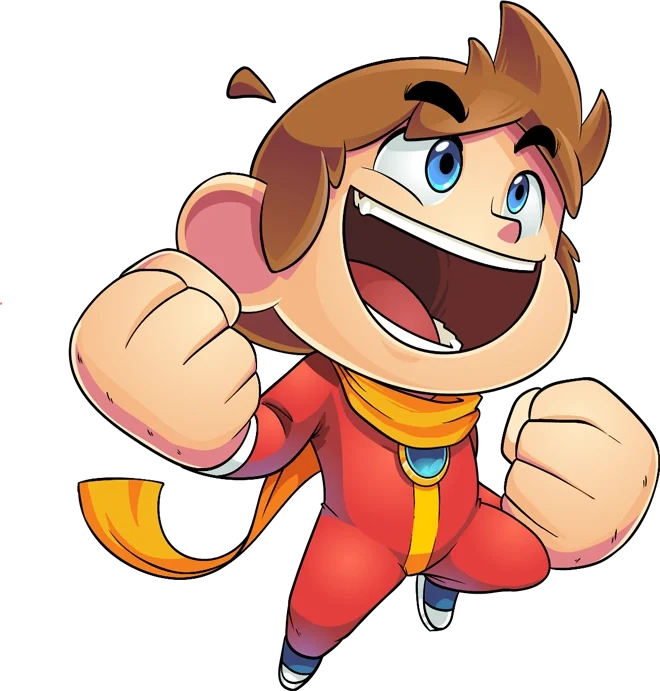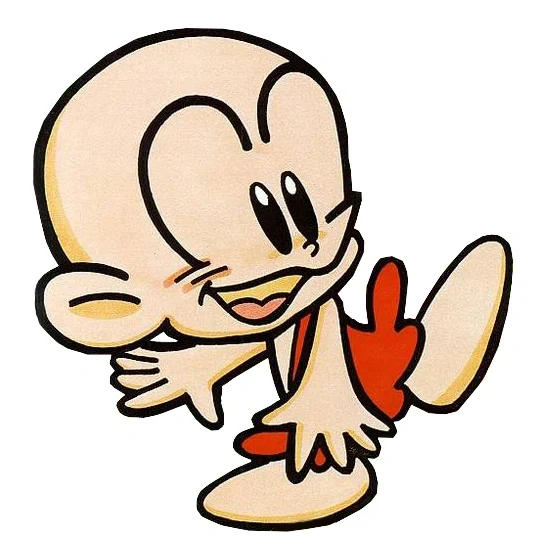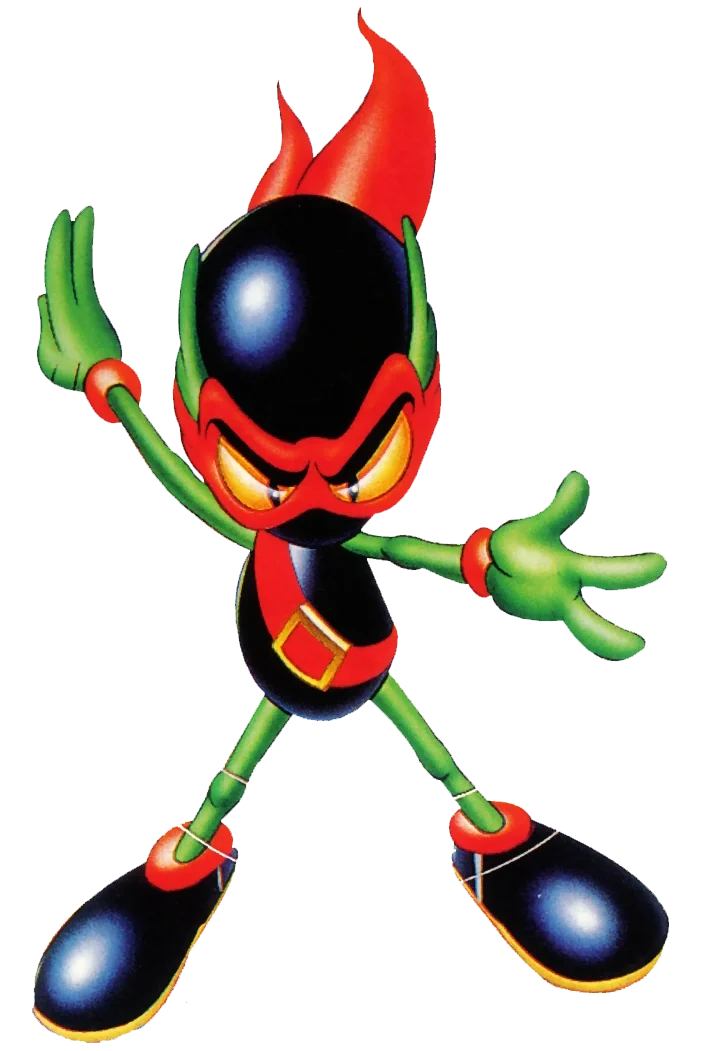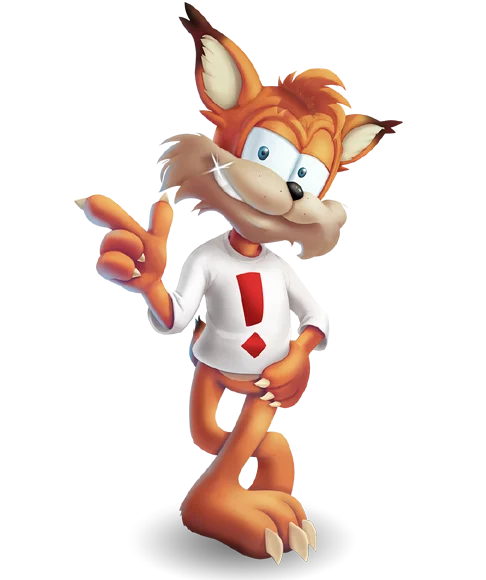
In the late 80s and early 90s, video game companies rushed to create their own platforming heroes after seeing how popular Nintendo’s characters were. They designed these characters – often animals or objects with human traits – with unique personalities and special abilities to appeal to kids. While many of these characters were heavily promoted with toys and advertising, most didn’t last long and were eventually forgotten.
Alex Kidd – ‘Alex Kidd in Miracle World’ (1986)

Before Sonic the Hedgehog became famous, Sega designed this character with large ears to rival Nintendo. The game was unique for its time, featuring boss fights based on rock-paper-scissors and sections where players drove vehicles, setting it apart from typical jumping and running games. Players moved through bright, lively worlds, defeating enemies with punches and gathering money to purchase items. This character was Sega’s official mascot until Sonic took over in the early 1990s.
Bonk – ‘Bonk’s Adventure’ (1989)

This caveman with a big head was the main character used to promote the TurboGrafx-16, hoping to compete with popular consoles like Nintendo and Sega. The gameplay centered around knocking out enemies with headbutts and using his teeth to climb walls through prehistoric worlds. Hudson Soft made several follow-up games that gave him new moves and power-ups to change his size. While he became popular with a dedicated fanbase, he wasn’t enough to make the TurboGrafx-16 the top console.
Zool – ‘Zool’ (1992)

Gremlin Graphics created this ninja ant game to compete with the popular Amiga computer. The game was fast-paced, challenging players to gather items and beat enemies in colorful, candy-inspired worlds. As a marketing tactic, Chupa Chups lollipops were prominently featured throughout the levels. While the game did reasonably well in Europe, it didn’t achieve widespread success internationally.
Bubsy – ‘Bubsy in Claws Encounters of the Furred Kind’ (1993)

Accolade heavily promoted this game featuring a bobcat, using edgy slogans and a style aimed at players in the 1990s. The game was fast-paced and relied on gliding, but it was often unfairly difficult, with characters dying in a single hit. Despite this, the developers made several sequels and even a cartoon pilot, neither of which gained much popularity. Ultimately, the game series couldn’t compete with more refined titles like ‘Super Mario World’.
Aero – ‘Aero the Acro-Bat’ (1993)

During the peak of mascot platformer popularity, Sunsoft released Aero, a circus-themed game featuring a character who could drill and glide through challenging levels filled with obstacles like spikes and carnival games. Unlike many games of the time, Aero had specific goals for each stage beyond just finishing it. Though reviewers praised the game’s visuals and animation, Aero’s character didn’t become widely famous.
Awesome Possum – ‘Awesome Possum… Kicks Dr. Machino’s Butt’ (1993)

Tengen tried something different with this game, blending educational content with classic platforming gameplay and focusing on environmental themes. However, the game often paused the action to quiz players on nature and ecology, and reviewers didn’t like the awkward controls or the main character’s constantly repeating lines. Ultimately, this game, featuring a possum, is remembered as a notable failure in the crowded platformer genre.
Rocky – ‘Rocky Rodent’ (1993)

Irem created a character named Rocky, a rodent who fought enemies using his hair. Players could collect different hairsprays to change Rocky’s hairstyle, unlocking new abilities to navigate the city. The game had a distinctive look inspired by the gritty, nineties grunge style. Unfortunately, weak level design and clunky controls meant Rocky never became a serious competitor to popular platforming heroes.
Gex – ‘Gex’ (1995)

Crystal Dynamics designed the sarcastic gecko character to attract older teenagers, filling the game with references to popular culture. As a platformer, it let players climb walls and use the gecko’s tail as a weapon, all within levels based on different media. Dana Gould’s voice work gave the character a memorable, witty personality. Although the game initially did well on the 3DO and PlayStation, it eventually became less well-known.
Bug – ‘Bug!’ (1995)

Sega designed this game, featuring a green bug, to demonstrate the 3D power of the Sega Saturn. Players navigated set routes through 3D worlds, battling spider-like creatures. A distinctive gameplay element allowed the character to walk on both walls and ceilings. However, due to the console’s technical constraints and the rise of more advanced 3D platform games, this character quickly became outdated.
Blinx – ‘Blinx: The Time Sweeper’ (2002)

Microsoft introduced a cat-like character as the first mascot for the original Xbox. The game involved controlling time to solve puzzles and battling enemies using a vacuum cleaner. The developers specifically utilized the console’s hard drive to make the time-bending gameplay possible. However, tricky controls and a lack of personality kept the character from becoming a well-known face of the brand.
Hey everyone, I’m really curious – what old video game mascot do you actually have fond memories of playing? Let me know in the comments who you enjoyed back in the day!
Read More
- Fed’s Rate Stasis and Crypto’s Unseen Dance
- Silver Rate Forecast
- Blake Lively-Justin Baldoni’s Deposition Postponed to THIS Date Amid Ongoing Legal Battle, Here’s Why
- Красный Октябрь акции прогноз. Цена KROT
- Ridley Scott Reveals He Turned Down $20 Million to Direct TERMINATOR 3
- MSCI’s Digital Asset Dilemma: A Tech Wrench in the Works!
- Global-e Online: A Portfolio Manager’s Take on Tariffs and Triumphs
- Bitcoin’s Ballet: Will the Bull Pirouette or Stumble? 💃🐂
- ETH to the Moon? 🚀 Or Just a Bubble?
- The VIX Drop: A Contrarian’s Guide to Market Myths
2025-11-24 03:45